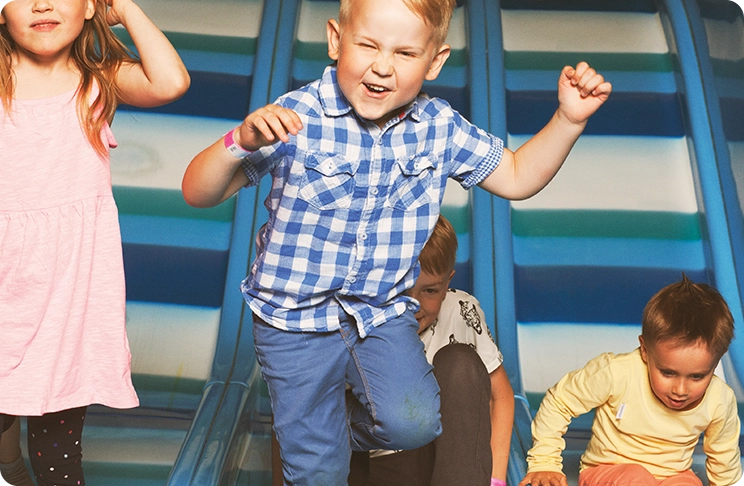According to a recent survey, almost half of parents worry about their child's immobility. The same proportion of parents say their child gets an average of two hours of exercise a day. According to the expert, the lack of physical activity among children is a real concern, but blaming parents is not the answer. Finding exercise routines and things that bring joy is an important step towards a more mobile everyday life.
According to a survey by the HopLop adventure park chain, parents are concerned about their children's mobility. 43% of parents surveyed say they worry about their child not being mobile at least occasionally. Similarly, up to 78% worry about their own immobility.
The majority of parents who responded to the survey say that their child exercises less than 3 hours a day (2 hours 48%, 1 hour 24%). One in five children (24%) exercise on average three hours a day.
"From a health promoter's perspective, physical inactivity is a real problem for children, and it is also reflected in their ability to cope, learn and develop. We know from research that self-reported data tends to be more optimistic than reality. The physical activity recommendation for children under 8 years of age is up to 3 hours per day. However, blaming or external sanctions are of no help in achieving this goal," says Marja Kinnunen, social psychologist and Executive Director of Tule, the Finnish Association for Physical Activity and Rehabilitation.
Kinnunen stresses that the most important thing is to find the ways in which the child and the whole family like to move and play in everyday life, and to find ways to increase them.
Kalle Peltola, CEO of HopLop, agrees wholeheartedly with Kinnunen that exercise is not increased by gritting your teeth, but on the contrary by loosening them.
"We asked parents how their children currently exercise, and the responses were very positive about the combination of play and exercise as a form of physical activity. Playing in the yard, self-directed exercise such as walking, and indoor sports and adventure parks emerged as almost equally popular forms of exercise. It is the variety and the increase of physical activity through joy and pleasure that I think is most important. Our children take an average of 11 000 steps during a 4-hour adventure in the park and I would venture to say that the movement actually happens by itself, under the guise of play."
The main reasons for inactivity cited by survey respondents include playing digital games, watching TV series and films, limited free time, social media and school fatigue.
Parents who took part in the survey were also asked what the best way to increase their child's physical activity has been in their own family. Some of the solutions given included working together, leading by example, moving through play, encouragement and the company of friends.
Kinnunen definitely agrees with the tips shared by parents, but also stresses that getting children moving should not be left to parents, and that it is not just the parents' responsibility to set an example.
"It's easy to think that it's all about our own motivation or that of our child, or our own parenting skills. But the truth is that if the environment encourages physical activity and the routines are physical, motivation is of little importance. If your child's daily life includes routines that involve movement, such as cycling to school or playing in the yard with the neighbour's children, at least a lot of the movement will be self-motivated. Hobbies are important, but the everyday environment plays a big role in children's physical activity. If a child's social world is online, it is understandable that they are attracted to the playground rather than the playground," says Kinnunen.

Marja Kinnunen's 3 tips for a more mobile everyday life:
You need to look critically at your own environment and shape it in a way that moves your child - both at the level of routines and concreteness. What if there were half-timbers on the wall in the living room or tyres hanging from the hallway door? What should happen to make the trip to nursery school a walk or a bike ride?
It's worth systematically introducing fun things into everyday life. For example, instead of a strict weekly calendar, each family member can take turns in choosing an activity for the following week.
Remember to give your child opportunities for movement, play and games. As long as children are given time and space, play often starts spontaneously. Active play also gets children moving.
* The data collection for the HopLop play and mobility survey was carried out via Typeform from 25.1.-3.2.2023. 1294 people responded to the survey.
Adventure park HopLop
HopLop is the largest adventure park chain in Finland and the largest private children's operator. HopLop was founded in 2005. HopLop and Leo´s merged in January 2023, with a total of 68 parks in Finland, Sweden, Norway, Denmark and Germany. HopLop wants to bring joy and fun to the everyday lives of families with children and make it easier without compromising safety.





